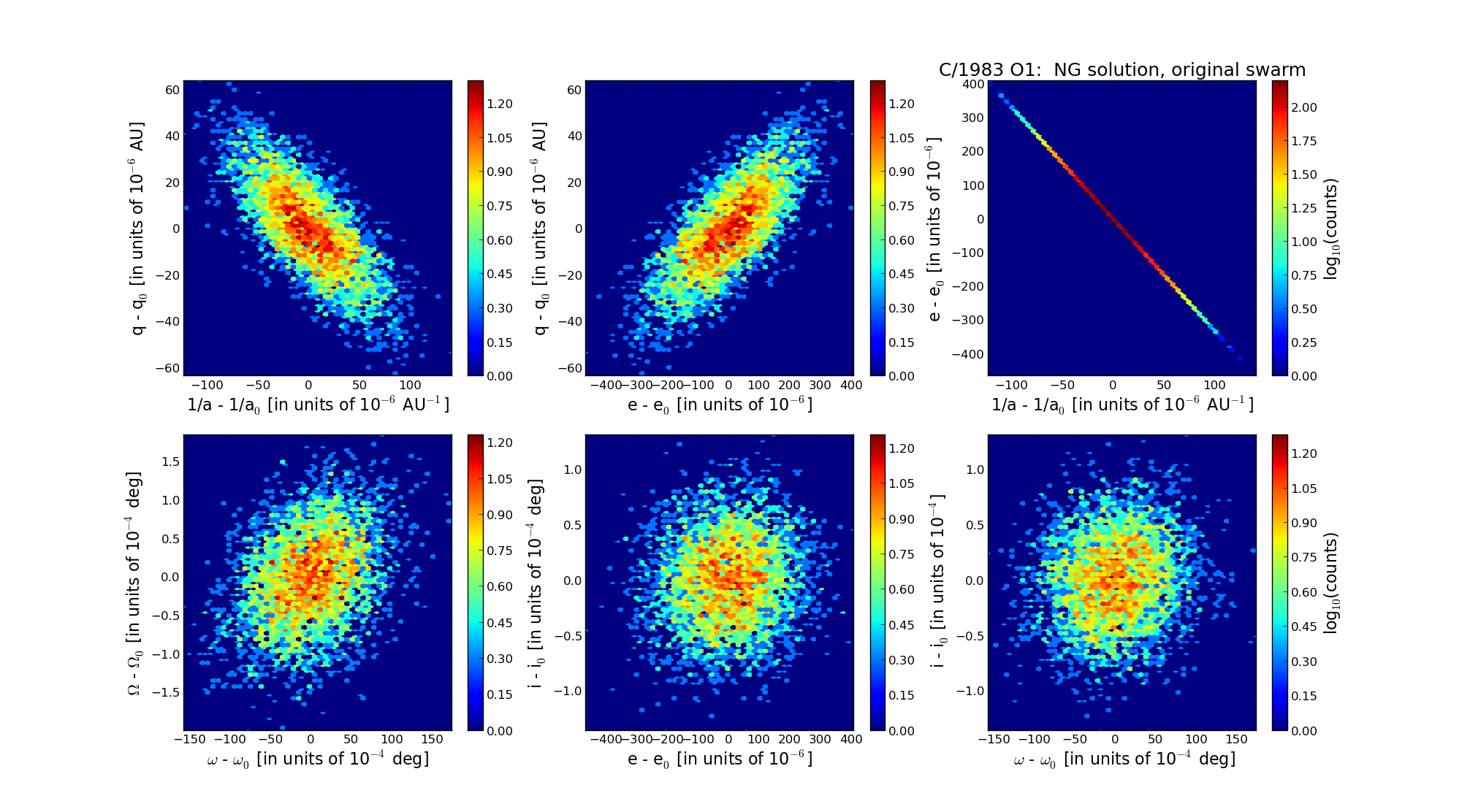| Solar System Dynamics & Planetology Group |
 |
C/1983 O1 Černis |  |
| Solar System Dynamics & Planetology Group |
 |
C/1983 O1 Černis |  |
| number of observations | 232 |
| number of residuals | 461 |
| data interval | 1983 July 21 — 1991 May 14 |
| rms [arcsec] | 1.11 |
| orbit quality class | 1a |
| Epoch (TT) | 19830705.0 | = JD 2445520.5 |
| time of perihelion passage (TT) | 19830721.247954 | ± 0.012645 |
| perihelion distance | 3.31791426 | ± 0.00001672 |
| eccentricity | 1.00190643 | ± 0.00006801 |
| argument of perihelion [deg] | 186.220505 | ± 0.002908 |
| longitude of the ascending node [deg] | 209.578776 | ± 0.000048 |
| inclination [deg] | 134.698671 | ± 0.000037 |
| inverse semimajor axis [10-6 au-1] | -574.59 | ± 20.49 |
| Nongravitational parameters [10-8 au/day2] | A1 = 2683. ± 942. | A2 = 158. ± 677. | A3 = 0.0 (assumed) |

| Epoch (TT) | 16800801 | |
| time of perihelion passage (TT) | 19830721.857189 | ± 0.018492 |
| perihelion distance | 3.32563612 | ± 0.00001829 |
| eccentricity | 0.99979769 | ± 0.00012012 |
| argument of perihelion [deg] | 186.280264 | ± 0.004512 |
| longitude of the ascending node [deg] | 209.611749 | ± 0.000056 |
| inclination [deg] | 134.684921 | ± 0.000037 |
| inverse semimajor axis [10-6 au-1] | 60.83 | ± 36.12 |
| Epoch (TT) | 22830910 | |
| time of perihelion passage (TT) | 19830722.539563 | ± 0.001245 |
| perihelion distance | 3.32055481 | ± 0.00001296 |
| eccentricity | 1.00062077 | ± 0.00000692 |
| argument of perihelion [deg] | 186.331396 | ± 0.000353 |
| longitude of the ascending node [deg] | 209.664462 | ± 0.000047 |
| inclination [deg] | 134.633032 | ± 0.000037 |
| inverse semimajor axis [10-6 au-1] | -186.95 | ± 2.08 |